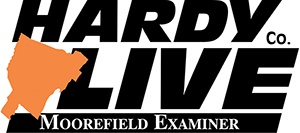The Hardy County Emergency Ambulance Authority (HCEAA) held the first two of five
community townhalls last week to address the ambulance, or EMS, levy that will appear
on the Nov. 5 general election ballot.
Additional public meetings are scheduled for Oct. 23 at the Mathias Baker Vol. Fire
Dept. in Mathias; Oct. 24 at the HCEAA Bldg. in Baker; and Oct. 29 at the Rig Civic
Center in Moorefield. All meetings are 6:30 – 7:30 p.m. Residents are encouraged to
attend, provide feedback, and ask questions.
The meetings are designed to help residents better understand the current financial situation of
HCEAA. The presentations, led by HCEAA Director Derek Alt and Assistant Director Nathan
Kesner, outline the purpose of the levy and how it would differ from the current ambulance fee
as well as the potential implications if the funding model does not change.
The current ambulance fee of $120 per household was instituted eight years ago and hasn’t
increased since, despite the cost of equipment, medicine, medical supplies, fuel, and virtually
everything else increasing. Alt shared data from the West Virginia EMS Coalition showing that
ambulance costs are up 20 percent in just the last two years.
According to County Commissioner Dave Workman who kicked off the meeting held in
Wardensville, the county has 12-18 months before drawdowns exceed what the fee collections
can support. Workman explained that the Commission faced four options as the financial
situation of HCEAA became clearer: 1) put the levy on the ballot; 2) increase the fee; 3) petition
the state for additional funding; 4) maintain the status quo.
Workman reported that the Commission is pursuing a study to determine the breadth of the
EMS crisis statewide. The study will potentially be used to lobby the state legislature for
additional funding. If nothing is done, service reductions will be all but inevitable, he said.
If passed by voters, the EMS levy would go into effect for the fiscal year beginning July 1, 2025.
It would replace the current $120 annual ambulance fee. However, if rejected, the fee will
remain in place and could increase.
As it will appear on the ballot, the levy rate would be tied to a resident’s total real and personal
property taxes (see sidebar for actual rates).
According to Alt, the current fee generates approximately $850,000. However, not all of that is
collected or collected within the corresponding fiscal year. Over the last couple of years, the
Commission has stepped up efforts to collect outstanding fees through the magistrate court.
If passed, the levy is estimated to raise approximately $1.9 million per year, roughly $9.5 million
over a five-year period. HCEAA has operated at a deficit for several years. According to Alt, the
additional funding from the levy would allow the agency to not only meet expenses, but also
put it on stable footing to absorb everything from future inflationary costs to additional staffing
and training, among other things. It will need to meet a 60 percent voter threshold to pass,
according to state code.
As it will appear on the ballot, the levy rate would be based on a residents’ total real and
personal property taxes. For every $100 dollars of assessed property value, the rates would be:
- Class I – 5.85 cents
- Class II – 11.70 cents
- Class III – 23.40 cents
- Class IV – 23.40 cents
For most residents the levy will be based on either Class II or III. Residents can find their levy
rate using a new calculator tool located at www.hardycounty.com. Property classes can be
found on tax bills.
The levy would mean that for some residents, what they pay would go down, and for others it
could increase. Alt said that according to 2022 Census data, the average assessed value of a
Class II residence in Hardy County is $91,980, making the amount owed under a future levy
$107.62.
Alt described the levy as being fairer since it is based on both real and personal property. “So, it
actually opens it up to include more taxpayers. It’s more of a cost-sharing type method,
because it’s added to vehicles, boats, and trailers,” he said. Under the levy, a renter who is not
responsible for paying the fee, would be responsible for paying the levy if they own a vehicle,
for example. Alt stressed that agricultural equipment would be exempt.
Alt estimates that to maintain current service levels, the fee would need to be increased about
125%, or up to about $270 if the levy is rejected by voters. Alt emphasized that those figures
are HCEAA’s estimates, not what the Commission would necessarily enact.
“But without an increase in either the fee or the levy, we’d have to cut service, essentially,” Alt
said. “Personnel, that’s your biggest cost. So, you’d have to cut personnel. So, you cut the
number of crews.”
If passed, the levy will remain in effect for five years after which time it would to be put before
voters again.






